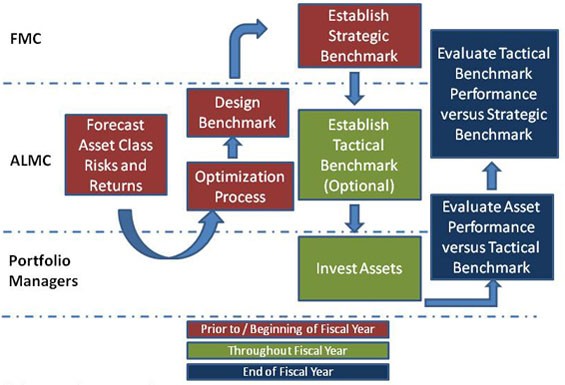Asset Allocation Is an Ongoing Crucial Process
Post on: 24 Июнь, 2015 No Comment

Everyone wants to be a superstar investor.
But to be successful, we have to think critically about how we’ll produce outsized returns.
Many investors try to swing for the fences, or they become obsessed with short-term volatility. In the process, they lose sight of what really matters.
With that in mind, which of the following do you think is the primary determinant of a portfolio’s returns over time?
- Stock Selection
- Manager’s Level of Expertise
- Dividend Reinvestment
- Luck
- None of the Above
Although the question can be interpreted in different ways, the correct answer is: None of the Above.
According to a study of mutual fund and pension fund data conducted by Ibbotson and Kaplan (2000), asset allocation explained around 90% of the variability of returns across time and about 40% of the variation of returns between funds.
Now, the study looked at professionally managed funds, not retail accounts. Nonetheless, it’s important to understand that asset allocation is of paramount importance, as it aligns the portfolio’s risk with the risk tolerance, time horizon, and objectives of the investor.
Asset allocation is the way a portfolio is divided among the main asset classes, which include equities, fixed income, and cash equivalents.
There are also asset class categories within each asset class. For example, equities can be broken down into U.S. stocks, developed-market stocks, and emerging-market stocks. Each asset class category has different risk and return characteristics.
Since everyone is unique, there’s no one-size-fits-all portfolio.
That being said, diversification provides every investor with the opportunity to both lower risk and increase returns – the so-called “free lunch” of finance.
Before I get to some examples, let me point out that an appropriate amount of cash is highly subjective and dependent upon one’s liquidity needs and employment situation.
Because of this, I’ll be excluding cash and cash equivalents from the framework and only addressing invested assets.
Diversification Framework
The following model asset allocation is a much more balanced approach than the four severely flawed portfolios I highlighted earlier this week.
Remember, these weights are just a model, although they’re loosely based on the Global Market Portfolio. the ultimate benchmark for diversified portfolios.

Also keep in mind that asset allocation is an ongoing process – it’s dynamic. We have to determine which asset class categories offer an attractive risk-reward balance at this point in time. Risk-reward dynamics change throughout investor sentiment cycles, as prices adjust to capital flows.
Based on some of the work I’ve done this year, I’ve constructed a hypothetical portfolio below:
This portfolio has something for everyone… passive indexing, active management, ETFs, closed-end funds, high yields, and value stocks:
- Dividend Sonar Index. The U.S. equities portion has been allocated to the Dividend Sonar Index, a diversified collection of dividend stocks selected using a proprietary investment strategy (click here to learn more).
- Vanguard FTSE All-World ex-US ETF (VEU ): Foreign equities are represented by VEU, a low-cost ETF that provides exposure to global developed and emerging market equities.
The hypothetical portfolio utilizes three closed-end funds (CEFs) trading at discounts to net asset value (NAV) to gain exposure to several additional asset class categories. This strategy does expose us to the liquidity risk of each CEF, so this method isn’t for everyone (and isn’t feasible for institutional investors):
- DoubleLine Income Solutions Fund (DSL ): A portion of this portfolio’s fixed-income exposure has essentially been outsourced to Jeff Gundlach, the new Bond King, and his team at DoubleLine.
- Nuveen Preferred Income Opportunities Fund (JPC ): I believe that preferred stocks. which have bond-like characteristics, are attractive in this environment, and JPC is an excellent way to gain exposure.
- Western Asset/Claymore Inflation-Linked Securities & Income (WIA ): I don’t believe that treasury-inflation protected securities (TIPS) should always be represented in a portfolio. However, with inflation expectations at multi-year lows, TIPS are more attractive than they’ve been in quite some time.
These asset class category exposures can easily be replicated with ETFs and mutual funds instead of CEFs.
Using the target weights I’ve specified, the portfolio has a solid yield of 5.1% – so I don’t want to hear any more complaining about low rates out there!
Again, this is just a hypothetical portfolio and can (and should) be tailored to suit your individual risk profile and preferences.
For example, you might swap out the preferred stocks in favor of a basket of cheap real-estate investment trusts (REITs).
Meanwhile, younger investors will want relatively higher allocations to stocks because they have a much longer time until retirement and can ride out the volatility in the market. In other words, someone just starting his or her career is willing to sacrifice capital preservation and yield for increased capital appreciation, even if the drawdowns are larger.
And remember, any diversified portfolio will need to be re-balanced periodically back to its target weights.
There are an infinite number of potential portfolios, but let me leave you with two key takeaways:
- Asset allocation is crucial. Your asset allocation decisions are among the most significant determinants of your long-term investment returns and variability of returns.
- You can earn a decent yield in this low-rate environment. I’ve shown that a 5% yield from a well-diversified portfolio is possible.
Safe (and high-yield) investing,
Alan Gula, CFA
As Wall Street Daily’s Chief Income Analyst, Alan is continually and fervently analyzing the financial markets. He draws upon a wide range of finance experience, including investment banking, research and trading. Learn More >>














